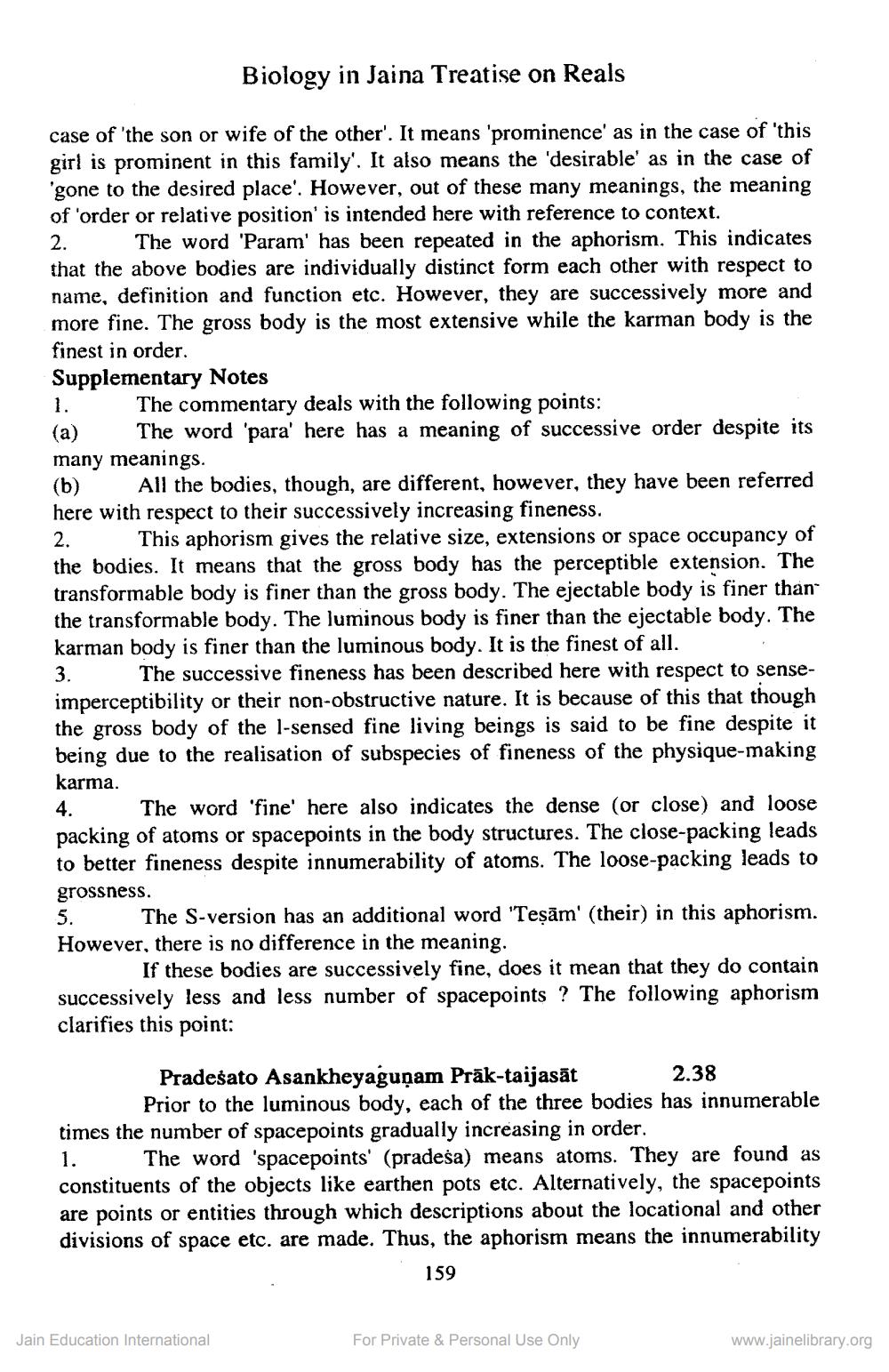________________
Biology in Jaina Treatise on Reals
case of 'the son or wife of the other'. It means 'prominence' as in the case of 'this girl is prominent in this family'. It also means the 'desirable' as in the case of 'gone to the desired place'. However, out of these many meanings, the meaning of 'order or relative position' is intended here with reference to context.
2.
The word 'Param' has been repeated in the aphorism. This indicates that the above bodies are individually distinct form each other with respect to name, definition and function etc. However, they are successively more and more fine. The gross body is the most extensive while the karman body is the finest in order.
Supplementary Notes
The commentary deals with the following points:
The word 'para' here has a meaning of successive order despite its many meanings. (b) All the bodies, though, are different, however, they have been referred here with respect to their successively increasing fineness.
2.
This aphorism gives the relative size, extensions or space occupancy of the bodies. It means that the gross body has the perceptible extension. The transformable body is finer than the gross body. The ejectable body is finer than the transformable body. The luminous body is finer than the ejectable body. The karman body is finer than the luminous body. It is the finest of all.
3.
The successive fineness has been described here with respect to senseimperceptibility or their non-obstructive nature. It is because of this that though the gross body of the 1-sensed fine living beings is said to be fine despite it being due to the realisation of subspecies of fineness of the physique-making karma.
4.
1.
(a)
The word 'fine' here also indicates the dense (or close) and loose packing of atoms or spacepoints in the body structures. The close-packing leads to better fineness despite innumerability of atoms. The loose-packing leads to grossness.
5. The S-version has an additional word 'Teṣām' (their) in this aphorism. However, there is no difference in the meaning.
If these bodies are successively fine, does it mean that they do contain successively less and less number of spacepoints? The following aphorism clarifies this point:
Pradesato Asankheyaguṇam Prāk-taijasāt
2.38
Prior to the luminous body, each of the three bodies has innumerable times the number of spacepoints gradually increasing in order.
1.
The word 'spacepoints' (pradesa) means atoms. They are found as constituents of the objects like earthen pots etc. Alternatively, the spacepoints are points or entities through which descriptions about the locational and other divisions of space etc. are made. Thus, the aphorism means the innumerability
159
Jain Education International
For Private & Personal Use Only
www.jainelibrary.org




